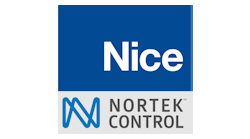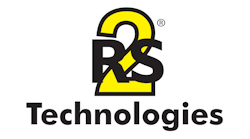It is nice to be able to educate the public on how they can better protect themselves and their property. I personally enjoy showing people how they can do something better, or sometimes, just less expensively. I like it when others say something nice about our company. But, when push comes to shove, I am judged by my company’s sales figures, and I’ll bet that almost every SD&I reader is in the same boat.
So, what does it take to close sales? What are successful access control companies and integrators doing? I contacted some and found that each had a different approach — sometimes very different; sometimes not as much. When said and done, I discovered the three basic focuses are: Selling the product; marketing the organization; and understanding the customer. There is no correct answer on which approach is best overall; however, what is important in listening to these successful managers, is that you actually have an approach, one that is well thought out and used consistently in sales call after sales call by everyone in the company.
Selling on Product
Remember the “FAB” acronym — feature, advantage, benefit? What are the outstanding features of a product? How do they differentiate and provide an advantage over the competition? How do features and advantages benefit the customer? This is a very popular way of selling.
“We highlight how the readers we supply support existing card formats and emphasize the high durability and reliability they provide,” says Dan DeMerchant, president of Highpower Security Products. “That the readers can be ordered in versions to support many of the most popular card technologies, including 125-kHz proximity and 13.56-MHz smart card, fits in with our strategy of migrating older card systems to newer software platforms. Customers appreciate the time savings realized by not having to re-issue hundreds or thousands of existing cards already in operation while still being able to migrate to the latest features offered by newer door controllers and software.”
Gary Staley, national sales director at RS2, wants customers to actually view how their product performs. “It is very important to get in front of the customer to demonstrate the functionality and capabilities of our product solution in a hands-on, live demonstration,” he says. “We want to bring our system into the customer’s location, open up the demo kit, fire up the system and get it on the screen. When we can take the credential to the door, presenting it to the reader there, the customer sees the door actually opening. When we do this, we get a high close rate. When we don’t, it is much lower.”
Adrian Gonzales, western regional sales manager for Keri Systems, emphasizes software. “As a technical product manufacturer, we are trying to capture electronic access control business from a dealer,” he explains. “It is unrealistic for us to get 100 percent of a single dealer’s business. The dealership itself will sometimes need to go beyond the scope of our line of telephone entry, traditional access control and video solutions to satisfy their end-user. However, our software, which is free, operates on multiple platforms in multiple environments. This means that the dealer’s technical people only need to learn one software to create new systems or retrofit older systems, even though those systems may have hardware from different hardware vendors.”
Selling on Company
Instead of pushing a product solution, other successful firms like to pull the customer into their company, emphasizing how their firm has the expertise and reputation of providing the best solution. By getting the customer to prefer their organization, it becomes a given that their products will do the job.
“We strive to keep our customers and prospects continually aware that we develop products and systems that are exciting and relevant to the changing needs of our industry,” explains Stephen Sheppard, vice president of business development for Hartmann Controls. “Maintaining such relevance keeps the door open, even when you may not be selling to that particular customer. Half the battle is getting your product in front of decision makers. If your products are exciting and relevant, your customers and prospects will be interested. That excitement will drive your sales force to make more contacts, set more appointments and close more sales.”
How does Hartmann Controls do this? Sheppard replies, “Get on the phone. When you have an exciting, relevant product, tell the industry. Emails, e-Blasts, website banners and other marketing communications are all acceptable but it is difficult to relay the same kind of excitement electronically as you can with a personal phone call.”
John LaFond, Vice President of Integrated Systems for Nortek Security & Control also believes in marketing the company first. “Smaller companies simply cannot invest enough in their businesses to provide the solutions that big companies do,” LaFond says. “As one of the big companies, we play to dominate, investing more in our business in a year than many of the smaller companies produce in sales. Since security equipment can last a decade or longer, we remind customers that they will need support not only today but in ten to 15 years as well. Additionally, we warn customers that 90 percent of the competition is still PC-based, fraught with problems from viruses to integration to platform stability. Today, there has been a technology shift to solid-state, which will run for a long time. Instead of concentrating on a single product, we stress that we provide an ecosystem comprised of state-of-the-art edge technology that has legs into the future.”
What Can I Do for You?
How many times have we heard companies advertise “we listen”? Paul Warner, general manager of west coast operations for Kastle Systems takes this concept a step further. “Sales is about developing a solution for the customer’s needs or threats. That’s why we must be a good listener and a good contributor, providing answers for their concerns,” Warner advises. “We need to listen to their needs and issues and create a solution around them. Then, we must explain how we provide the products that will develop that solution.
“Furthermore, focus on the customer means we need to look at trends in their industry, what works in their space,” he continues. “Is visitor management becoming a need in their workplace or are people looking for more video applications? Whatever it is, we must show them how we provide an access control system that will interface with multiple types of other systems.”
Bill Lorber, vice president of sales and marketing at Apollo Security concurs: “Most access control decisions impact the customer for many years in the future. Therefore, in the initial sales phase, learn about the customer’s organization, capabilities, requirements and concerns. Listening, understanding and answering, and asking questions are paramount. Once done, convey that the sales team is knowledgeable, competent and honest. The customer must trust that the combination of your product, your company and you will provide a good long-term solution. At this point, provide a proposal that meets the customer’s requirements and budget. Lastly, and critical, avoid surprising the customer at the closing stage.”
Scott Lindley is President of Farpointe Data Inc., a DORMA Group Company. To request more info about Farpointe, visit www.securityinfowatch.com/10215927.






